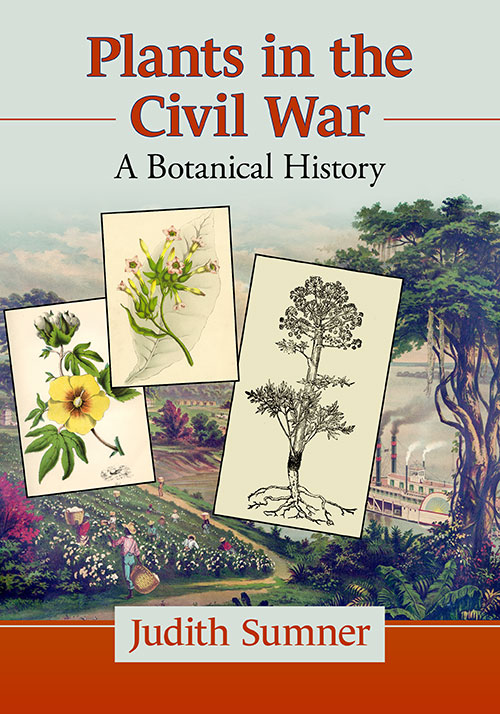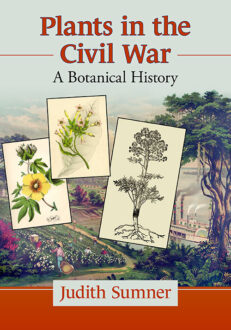Subtotal: $49.95
Plants in the Civil War
A Botanical History
$39.95
In stock
About the Book
Slavery was at the heart of the South’s agrarian economy before and during the Civil War. Agriculture provided products essential to the war effort, from dietary rations to antimalarial drugs to raw materials for military uniforms and engineering. Drawing on a range of primary sources, this history examines the botany and ethnobotany of America’s defining conflict. The author describes the diverse roles of cash crops, herbal medicine, subsistence agriculture and the diet and cookery of enslaved people.
About the Author(s)
Bibliographic Details
Judith Sumner
Format: softcover (7 x 10)
Pages: 201
Bibliographic Info: 41 photos, notes, bibliography, index
Copyright Date: 2023
pISBN: 978-1-4766-9131-2
eISBN: 978-1-4766-4883-5
Imprint: McFarland
Table of Contents
Preface 1
1. The Botanical Roots of Slavery 3
Colonial Origins 3; Enslaved Life 5; Economy and Natural History 7; Popular Culture 10
2. Plantation Landscapes 12
Land and Trees 12; Asian Imports 17; Hedges 21; Brush Arbors 24; Wartime Landscapes 25
3. Agriculture and Crops 26
North and South 26; Soils, Nutrients, and Cultivation 30; Guano 34; Cash Crops 36; Self-Sufficiency 43
4. Foods and Diet 49
Crops and Cookery 49; Fruits and Sweets 52; Grains and Bread 56; Food Preservation 58; Military Rations 61; Whiskey, Wine, and Beer 68; African Crops and Diets 71; Survival 76
5. Medicinal Botany and Medical Practice 79
Antebellum Practices 79; Southern Strategies 82; Confederate Medicinal Flora 84; Malaria, Miasma, Feverbark, and Quinine 90; Soldiers’ Medicine 94; Slavery and Medicine 98
6. Gardens and Horticulture 103
Plantation Gardens 103; Botanical Origins 106; Home Gardens and Floral Culture 112; Indoor Gardens and Parlor Botany 116; Gardens and Slavery 120; Botanical Studies 123
7. Fibers and Dyes 126
King Cotton and Culture 126; Cotton Gins 130; Bast and Leaf Fibers 132; Textiles, Clothing, and Uniforms 135; Military Needs 137; Silk 140; Paper 142; Dyestuffs and Pigments 144
8. Timber and Wood 147
The Timbered Landscape 147; Farms and Homesteads 149; Military Needs 154; Timber Products and Naval Stores 158; Military Engineering and Construction 161; Loss and Gain 165
Afterword 168
Chapter Notes 171
Bibliography 183
Index 191
Book Reviews & Awards
• “On occasion, there are historical topics so obvious in their significance that they remain overlooked for far too long. Such is the case of the role of plants during the American Civil War, and, fortunately, we have a remedy in Judith Sumner’s Plants in the Civil War: A Botanical History… Sumner has conducted a highly original analysis of the many ways plants touched the lives of southerners… Concise yet comprehensive… The book’s omnivorous scope is positively delightful… Plants in the Civil War makes a welcome interdisciplinary addition to the growing field of Civil War era environmental history.”—Civil War Book Review
• “An inherently fascinating and impressively informative read…extraordinary…unreservedly recommended”—Midwest Book Review

 The Hill Wars of the Korean Conflict
The Hill Wars of the Korean Conflict 




